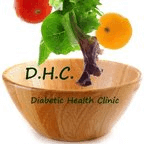 Keep up to date with what we are doing at the Diabetic Health Clinic.
Keep up to date with what we are doing at the Diabetic Health Clinic.
Updates on the latest programs.
Check out the latest recipes.
Learn about the latest research and more…..
Diabetic Health Clinic Newsletter – 18/8/2014
Greetings,
Last week we looked at nutritional deficiencies. It makes sense to us that someone that is eating foods packed with nutrients should have no deficiencies at all. We also suggested that it is more likely that someone will have deficiencies if they are eating a processed food diet. This type of diet is low in nutrients and high in sugar.
The question is what is a balanced diet? This is a question that keeps coming up all the time. We have heard it so many time. If I stop eating my usual food (this is the usual processed supermarket food) won’t I be deficient in nutrients?
We could spend much time on this question and over time we will touch on all of the aspects of this question. What we want to do today is have a look at what makes a whole foods, as grown diet, balanced.
Many people will eat one type of food most of the time. Often we seem to end up with a few dishes which become favourites. That might be fine in some cases depending on what these dishes are. It is more likely that a few dishes contain limited whole foods and therefore it is possible that this is not a balanced diet. Lets now think about what makes a diet balanced. When you look at whole foods, it all revolves around the colour. For example people who are low in iron should be consuming a lot of dark greens. This is a well known fact. Lets have a look for example a single beetroot. This is a dark red vegetable.
Vitamin A equiv. (0%) 2 μg
Thiamine (B1) (3%) .031 mg
Riboflavin (B2) (2%) .027 mg
Niacin (B3) (2%) .331 mg
Pantothenic acid (B5) (3%) .145 mg
Vitamin B6 (5%) .067 mg
Folate (B9) (20%) 80 μg
Vitamin C (4%) 3.6 mg
Trace metals
Calcium (2%) 16 mg
Iron (6%) .79 mg
Magnesium (6%) 23 mg
Manganese (14%) 0.3 mg
Phosphorus (5%) 38 mg
Potassium (6%) 305 mg
Sodium (5%) 77 mg
Zinc (4%) 0.35mg
As you start to look into all the different nutrients you will see that the different colours of vegetables contain different nutrients or very different quantities of nutrients. Having a balanced diet is as easy as looking at a rainbow. If a person consumes evenly from all colours, that is white, to yellow, to orange, to red, to light green and then to dark green, they will actually be ingesting all of the required nutrients.
The secret is to eat all colours. It is called the rainbow approach. Next week we will be looking at how to ensure that you are ingesting enough.
This week we are including the raw food pyramid. Have a close look at it. It will give you a good feel for what a balanced diet should look like. Click on the info-graphic section below to see the relevant page.

This week we added the following to our web site.
New Video.
Now showing in the Diabetic Health Clinic Cinema:
Obesity Advertisement.This 1 minute & 42 second advertisement is hard hitting a disturbing. It explains the massive problem faced by todays society. You will be shocked when you see this.
Click through to watch it now.
New Study.
A study shows that the consumption of unsaturated fat increases insulin sensitivity.
Click here to read this important information.
Info-Graphics.
The Raw Food Pyramid.
Click here to see the most healthy and balanced way to eat
Regards,
Joanne & Peter.
PS. If you have not joined us on social media then use the links below to like our page on your favourite social media provider.
Newsletter No. 65 – 18/8/2014





